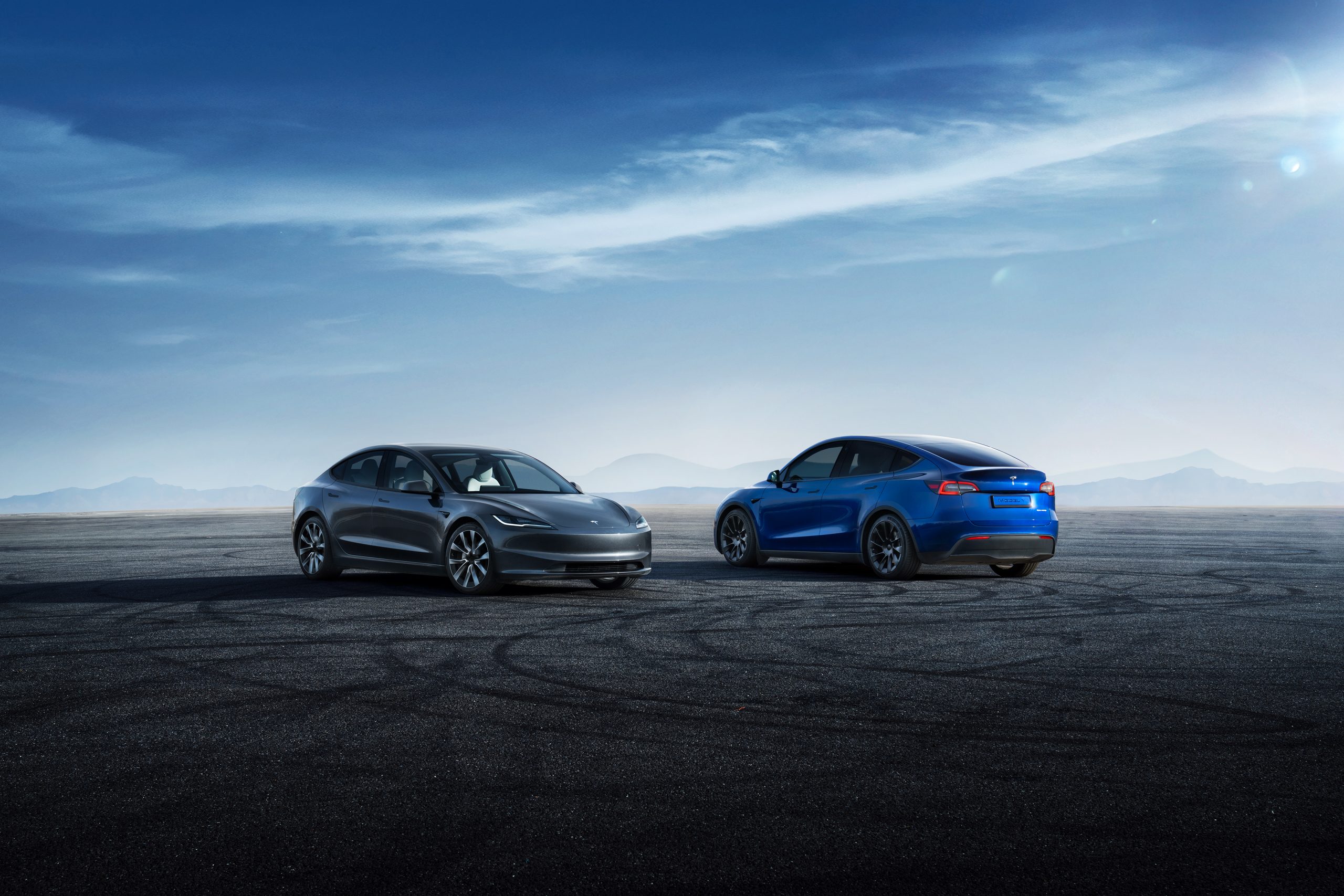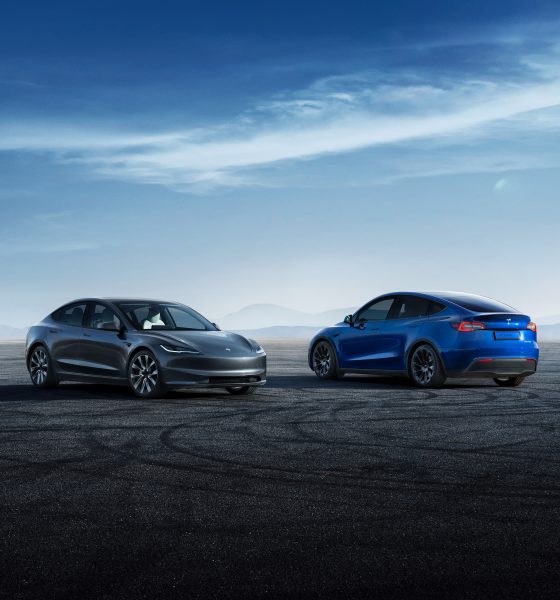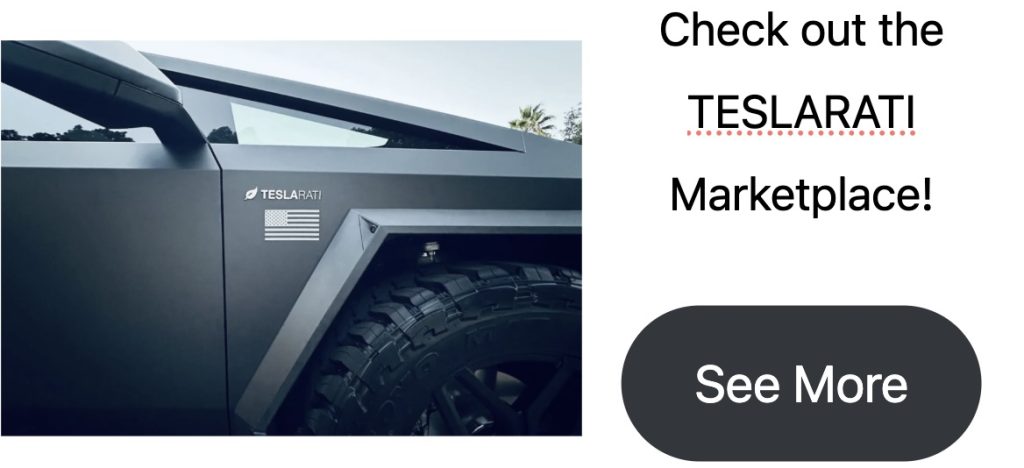Tesla remained the dominant seller of battery-electric vehicles (BEVs) in the U.S. last year, with early estimates showing that the company sold more than most of its competitors combined. While data isn’t yet available for every automaker selling BEVs in the U.S., we took the time to compile some of the earliest estimates available for 2024 BEV sales, giving us an idea of where Tesla’s competitors landed in the year’s sales.
According to Cox Automotive, automakers sold 1.3 million BEVs in the U.S. in 2024, making up 8 percent of the total market share of nearly 16 million vehicles sold across powertrain types. EV sales also jumped in Q4 to 356,000 vehicles, marking a 12 percent jump year over year.
Cox also expects EV deliveries to surpass 1.5 million in the U.S. in 2025, while 2023 deliveries topped out at 1.2 million.
General Motors (GM) and Ford took up the second and third spots in U.S. BEV sales in 2024, both following Tesla, which held first place decisively. GM’s BEV sales were made up of the Chevy Equinox EV, the Chevy Blazer EV, the Chevy Silverado EV, the Cadillac Lyriq, the GMC Hummer EV, the GMC Sierra EV, and the BrightDrop EV600 commercial van. Ford’s BEV sales were comprised of the Mustang Mach-E, the F-150 Lightning, and the E-Transit.
Toyota was one of the few other manufacturers to release specific U.S. and BEV data, with the latter being made up of those from the BZ4X and Lexus RZ. The vast majority of Toyota’s “electrified” vehicles is comprised of hybrid and plugin hybrid powertrains, along with the Mirai which sports a fuel cell powertrain. All of these electrified vehicle types are excluded from the figure below.
Hyundai’s BEV figure was made up of Ioniq 5, Ioniq 6, and Kona BEV sales, the latter of which is also offered in a hybrid version. The company’s subsidiary Kia had BEV sales including the battery-electric EV6 and EV9, and while the automaker also sells a BEV version of the Niro, it did not separate the vehicle’s hybrid and BEV versions in its report released last week.
It’s worth noting that Tesla doesn’t share figures for individual market sales, though the maker was estimated by Cox Automotive to have sold about 633,000 units to remain the clear leader in the market. Others, such as Lucid and Rivian, deliver the vast majority of their vehicles in the U.S., though they do not break out region-specific figures. Meanwhile, similar estimates for the brands have not yet been shared publicly.
READ MORE ABOUT U.S. BEV SALES: Colorado becomes the #1 state for EV sales, beating California
Audi had 23,152 BEVs sold in the U.S. made up of its e-tron Q4, Q6, Q8, and GT lineups, while its parent company, Volkswagen, sold blank units comprised of the ID.4 and newly launched ID.Buzz, which was only sold in the market in the fourth quarter. BMW sold its battery-electric i4, i5, i7, and iX models in the U.S. last year.
Nissan’s BEVs included the Leaf and the Ariya, which saw year-to-date sales increases of 57 and 47 percent, respectively.
Cox Automotive is also expected to unveil its 2024 EV Sales report in the coming weeks, which should shed light on many of the automakers that have not shared market-specific figures.
You can see the recent estimates from Cox Automotive on the top EV makers in the U.S. in 2024 below, along with some figures directly from each automaker. Additionally, the source of the figures are linked near the bottom of the page.
How many BEVs did automakers sell in the U.S. in 2024?
- Tesla: 633,762
- GM: 114,432
- Ford: 97,865
- Hyundai: 61,797
- Kia: 56,099
- Rivian: 51,442
- BMW: 50,981
- Nissan: 31,024
- Toyota: 28,267
- Mercedes-Benz: 21,154
- Audi: 23,152
- Volkswagen: 18,183
Top 10 EV models sold in the U.S., according to Cox Auto estimates
- Tesla Model Y
- Tesla Model 3
- Ford Mustang Mach-E
- Hyundai Ioniq 5
- Tesla Cybertruck
- Ford F-150 Lightning
- Honda Prologue
- Chevy Equinox EV
- Cadillac Lyriq
- Rivian R1S
You can see detailed estimates from Cox Automotive, which were released on January 13.
Audi | BMW | Ford | GM | Hyundai | Lucid | Nissan | Rivian | Tesla | Toyota | Volkswagen
Updated 1/19: Added the latest figures from Cox Automotive estimates.
What are your thoughts? Did I miss any automakers or U.S. sales figures? Let me know at zach@teslarati.com, find me on X at @zacharyvisconti, or send us tips at tips@teslarati.com.
Study reveals less than 1% of EV owners wish to switch back to ICE

News
Ford cancels all-electric F-150 Lightning, announces $19.5 billion in charges
“Rather than spending billions more on large EVs that now have no path to profitability, we are allocating that money into higher returning areas, more trucks and van hybrids, extended range electric vehicles, affordable EVs, and entirely new opportunities like energy storage.”
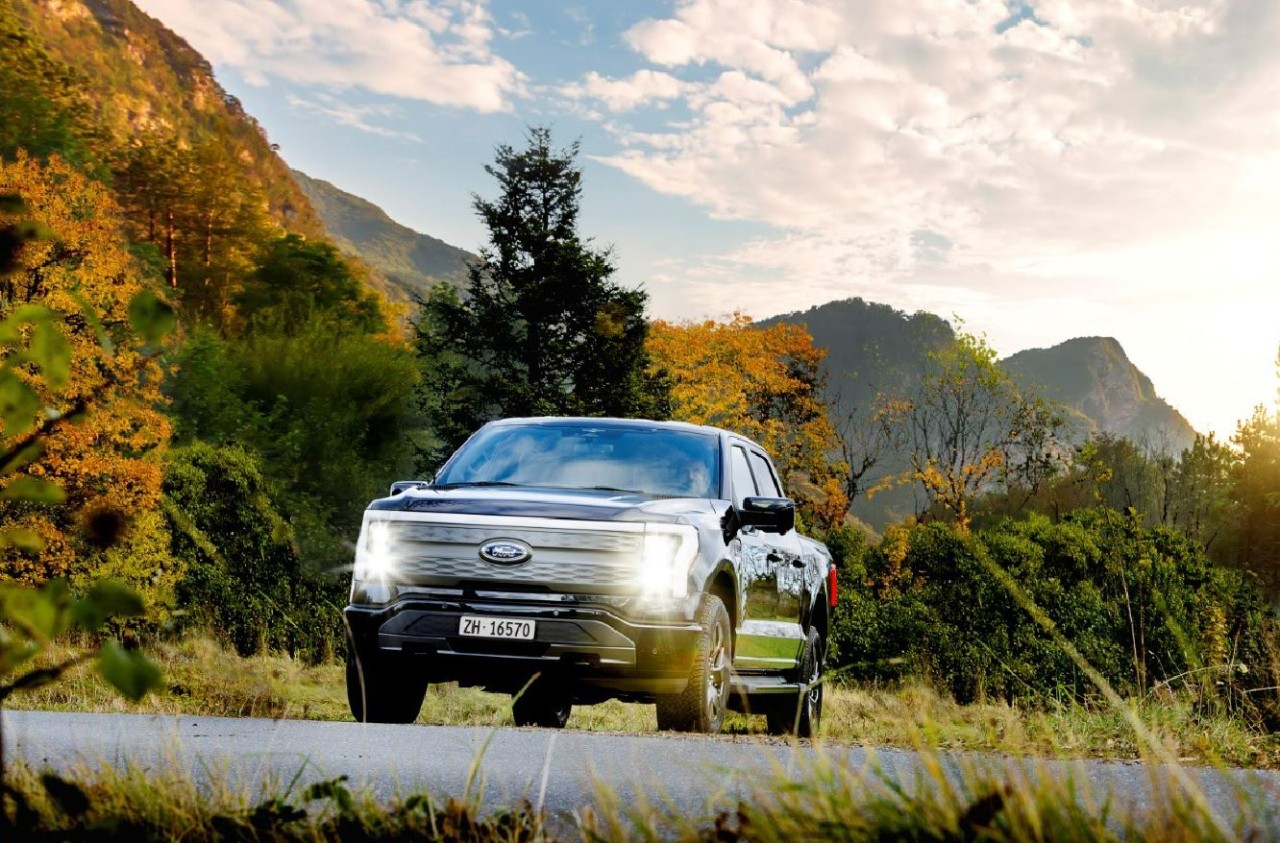
Ford is canceling the all-electric F-150 Lightning and also announced it would take a $19.5 billion charge as it aims to quickly restructure its strategy regarding electrification efforts, a massive blow for the Detroit-based company that was once one of the most gung-ho on transitioning to EVs.
The announcement comes as the writing on the wall seemed to get bolder and more identifiable. Ford was bleeding money in EVs and, although it had a lot of success with the all-electric Lightning, it is aiming to push its efforts elsewhere.
It will also restructure its entire strategy on EVs, and the Lightning is not the only vehicle getting the boot. The T3 pickup, a long-awaited vehicle that was developed in part of a skunkworks program, is also no longer in the company’s plans.
Instead of continuing on with its large EVs, it will now shift its focus to hybrids and “extended-range EVs,” which will have an onboard gasoline engine to increase traveling distance, according to the Wall Street Journal.
“Ford no longer plans to produce select larger electric vehicles where the business case has eroded due to lower-than-expected demand, high costs, and regulatory changes,” the company said in a statement.
🚨 Ford has announced it is discontinuing production of the F-150 Lightning, as it plans to report a charge of $19.5 billion in special items.
The Lightning will still be produced, but instead with a gas generator that will give it over 700 miles of range.
“Ford no longer… pic.twitter.com/ZttZ66SDHL
— TESLARATI (@Teslarati) December 15, 2025
While unfortunate, especially because the Lightning was a fantastic electric truck, Ford is ultimately a business, and a business needs to make money.
Ford has lost $13 billion on its EV business since 2023, and company executives are more than aware that they gave it plenty of time to flourish.
Andrew Frick, President of Ford, said:
“Rather than spending billions more on large EVs that now have no path to profitability, we are allocating that money into higher returning areas, more trucks and van hybrids, extended range electric vehicles, affordable EVs, and entirely new opportunities like energy storage.”
CEO Jim Farley also commented on the decision:
“Instead of plowing billions into the future knowing these large EVs will never make money, we are pivoting.”
Farley also said that the company now knows enough about the U.S. market “where we have a lot more certainty in this second inning.”
News
SpaceX shades airline for seeking contract with Amazon’s Starlink rival

SpaceX employees, including its CEO Elon Musk, shaded American Airlines on social media this past weekend due to the company’s reported talks with Amazon’s Starlink rival, Leo.
Starlink has been adopted by several airlines, including United Airlines, Qatar Airways, Hawaiian Airlines, WestJet, Air France, airBaltic, and others. It has gained notoriety as an extremely solid, dependable, and reliable option for airline travel, as traditional options frequently cause users to lose connection to the internet.
Many airlines have made the switch, while others continue to mull the options available to them. American Airlines is one of them.
A report from Bloomberg indicates the airline is thinking of going with a Starlink rival owned by Amazon, called Leo. It was previously referred to as Project Kuiper.
American CEO Robert Isom said (via Bloomberg):
“While there’s Starlink, there are other low-Earth-orbit satellite opportunities that we can look at. We’re making sure that American is going to have what our customers need.”
Isom also said American has been in touch with Amazon about installing Leo on its aircraft, but he would not reveal the status of any discussions with the company.
The report caught the attention of Michael Nicolls, the Vice President of Starlink Engineering at SpaceX, who said:
“Only fly on airlines with good connectivity… and only one source of good connectivity at the moment…”
CEO Elon Musk replied to Nicolls by stating that American Airlines risks losing “a lot of customers if their connectivity solution fails.”
American Airlines will lose a lot of customers if their connectivity solution fails
— Elon Musk (@elonmusk) December 14, 2025
There are over 8,000 Starlink satellites in orbit currently, offering internet coverage in over 150 countries and territories globally. SpaceX expands its array of satellites nearly every week with launches from California and Florida, aiming to offer internet access to everyone across the globe.
Currently, the company is focusing on expanding into new markets, such as Africa and Asia.
News
Tesla Model Y Standard stuns in new range test, besting its Premium siblings
Tesla’s newer vehicles have continued to meet or exceed their EPA estimates. This is a drastic change, as every 2018-2023 model year Tesla that Edmunds assessed did not meet its range estimates.
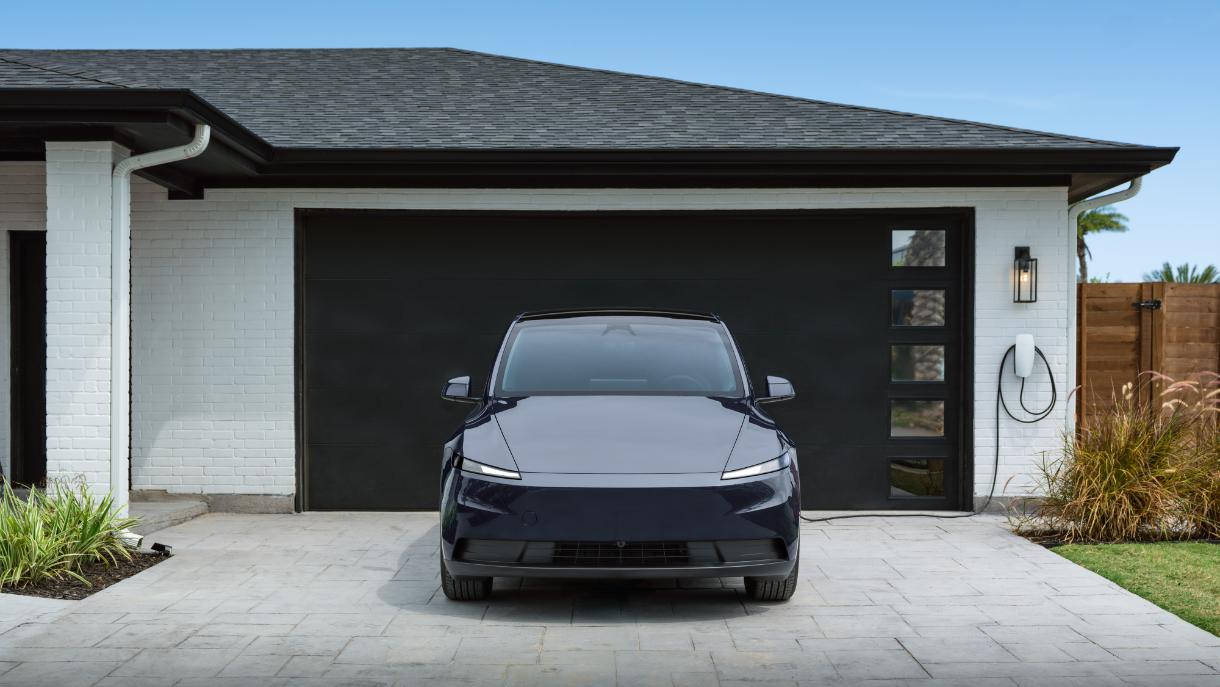
The Tesla Model Y Standard stunned in a new range test performed by automotive media outlet Edmunds, besting all of its Premium siblings that are more expensive and more luxurious in terms of features.
Testing showed the Model Y Standard exceeded its EPA-estimated range rating of 321 miles, as Edmunds said it is the “longest-range Model Y that we’ve ever put on our loop.” In the past, some vehicles have come up short in comparison with EPA ranges; for example, the Model Y’s previous generation vehicle had an EPA-estimated range of 330 miles, but only drove 310.
Additionally, the Launch Series Model Y, the first configuration to be built in the “Juniper” program, landed perfectly on the EPA’s range estimates at 327 miles.
It was also more efficient than Premium offerings, as it utilized just 22.8 kWh to go 100 miles. The Launch Series used 26.8 kWh to travel the same distance.
It is tested using Edmunds’ traditional EV range testing procedure, which follows a strict route of 60 percent city and 40 percent highway driving. The average speed throughout the trip is 40 MPH, and the car is required to stay within 5 MPH of all posted speed limits.
Each car is also put in its most efficient drive setting, and the climate is kept on auto at 72 degrees.
“All of this most accurately represents the real-world driving that owners do day to day,” the publication says.
With this procedure, testing is as consistent as it can get. Of course, there are other factors, like temperature and traffic density. However, one thing is important to note: Tesla’s newer vehicles have continued to meet or exceed their EPA estimates. This is a drastic change, as every 2018-2023 model year Tesla that Edmunds assessed did not meet its range estimates.
Tesla Model Y Standard vs. Tesla Model Y Premium
Tesla’s two Model Y levels both offer a great option for whichever fits your budget. However, when you sit in both cars, you will notice distinct differences between them.
The Premium definitely has a more luxurious feel, while the Standard is stripped of many of the more premium features, like Vegan Leather Interior, acoustic-lined glass, and a better sound system.
You can read our full review of the Model Y Standard below:
Tesla Model Y Standard Full Review: Is it worth the lower price?
